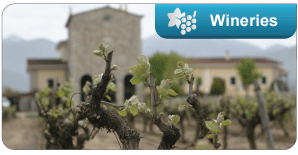Venetian rule
Even during the Crusades and after Constantinople had been taken by the Ottomans in 1453, the Europeans (the Franks, Venetians and Genoese) had been conspicuously present in Greece, especially in the south and on the islands where they still pitted themselves against the fleet of the Ottoman Empire. Venetian rule (12th-17th century) extended over the islands of the Aegean and the Ionian Seas, over Crete, and for a short period in the Peloponnese (Venetians and Peloponnesian wine). The Europeans had always showed a great appreciation of Greek wine which they valued not only for its quality but also for its staying power which allowed it to withstand long sea voyages. Thus, Frankish and Venetian ships lost no time in loading their ships with wines from Crete, the Cyclades, and Monemvassia. Especially, Monemvassia was a favorite with the Europeans. Not only had it had given its other name, Malvasia, to its sheltered port but also to the time’s most coveted wine, Malvasias oenos. Later on, the same name was given to numerous grape varieties but also to inevitable imitations of the wine. Today, that famous wine enjoys a revival in Greece through the establishment of a new PDO wine, known as PDO Monemvassia-Malvasia. Under Venetian rule exports of Malvasias reached unprecedented proportions in the history of wine worldwide. After an illustrious course paved with glorious moments such as the fame Santorini wines in Paris had enjoyed, the golden age of Greek wines during Venetian rule would come to an end: The Ottomans had prevailed not only over continental Greece but over the Greek islands as well. Still, around the middle of the 17th century, conflicts between the Venetians and the Turks in the Aegean resumed ushering warfare in the realm of wine.


